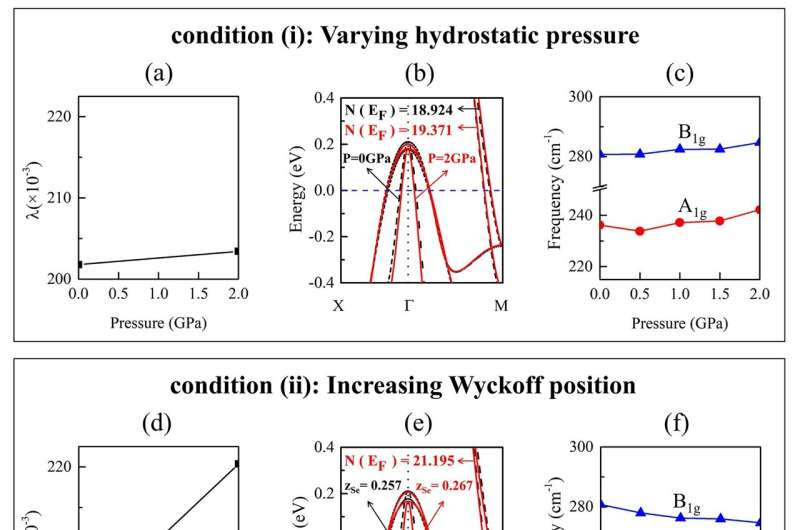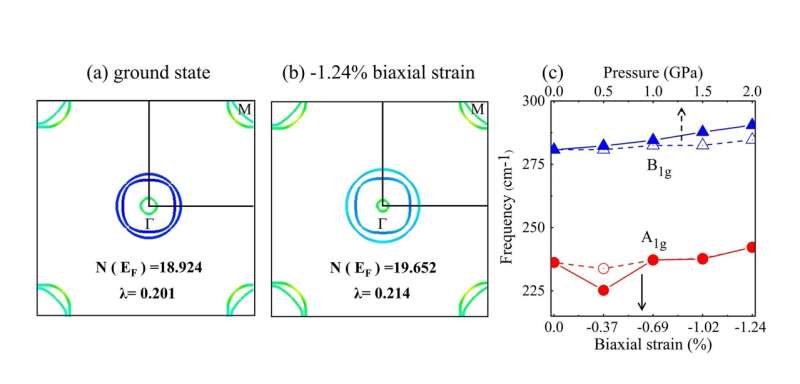The DFT results of the calculated EPC constants, the band structures and Raman frequencies. Credit: LI Tingting
FeSe, an iron-based superconductor, is an important prototype material to study the superconduction-related properties, and electron-phonon coupling (EPC) plays an important role in FeSe. Pressure changes the structure of FeSe, which results in the changes of EPC.
A team led by Prof. Zeng Zhi from the Hefei Institutes of Physical Science of the Chinese Academy of Sciences investigated the influence of the of the structural change factors, Wyckoff position of Se (zSe) and lattice constants, individually, on the electron-phonon coupling, electronic structure, and the Raman frequencies under pressure.
They predicted that the in-plane biaxial strain on FeSe increased the electron-phonon coupling due to the increasing zSe and the decreasing in-plane lattice constants. The result was published in Physical Chemistry Chemical Physics.
Previous studies mainly focused on the increase of the EPC related to A1g mode and zSe only, but pressure also changed lattice constants. Studying the effect of the two individual factors on the electronic structure and the phonon frequencies under pressure would provide a clear understanding of the EPC in the FeSe.
In this research, the scientists took turns leaving one factor in its ground state and then changing the other by hand to simulate the increased pressure effect. Under the considered conditions, the EPC constantly increased.
The Fermi surface and Raman frequencies of FeSe under the in-plane biaxial strain compared with that under the ground state. Credit: LI Tingting
By discussing electron and phonon properties under the conditions considered, it can be seen that the increase of zSe enhances the EPC by increasing the states around the Fermi level, whereas the decrease of the lattice constants enhanced the EPC by increasing A1g and Fe-Fe (B1g) phonon frequencies.
Besides, the decrease of the lattice constants and the increase of the zSe could also be realized by applying an in-plane biaxial strain. With the increase of biaxial strain, the states at the Fermi level and the Raman frequencies increase. The results show that the in-plane biaxial compressive strain is predicted to increase the EPC constant.
In this work, the influences of two factors on electron performance and phonon performance were explored individually, and the in-plane biaxial strain was proved to be a good method to improve EPC, providing a strategy for the experimentalists to improve EPC.
More information: Tingting Li et al, Factors affecting the electron–phonon coupling in FeSe under pressure, Physical Chemistry Chemical Physics (2021). DOI: 10.1039/D1CP02749B
Journal information: Physical Chemistry Chemical Physics
Provided by Chinese Academy of Sciences

























